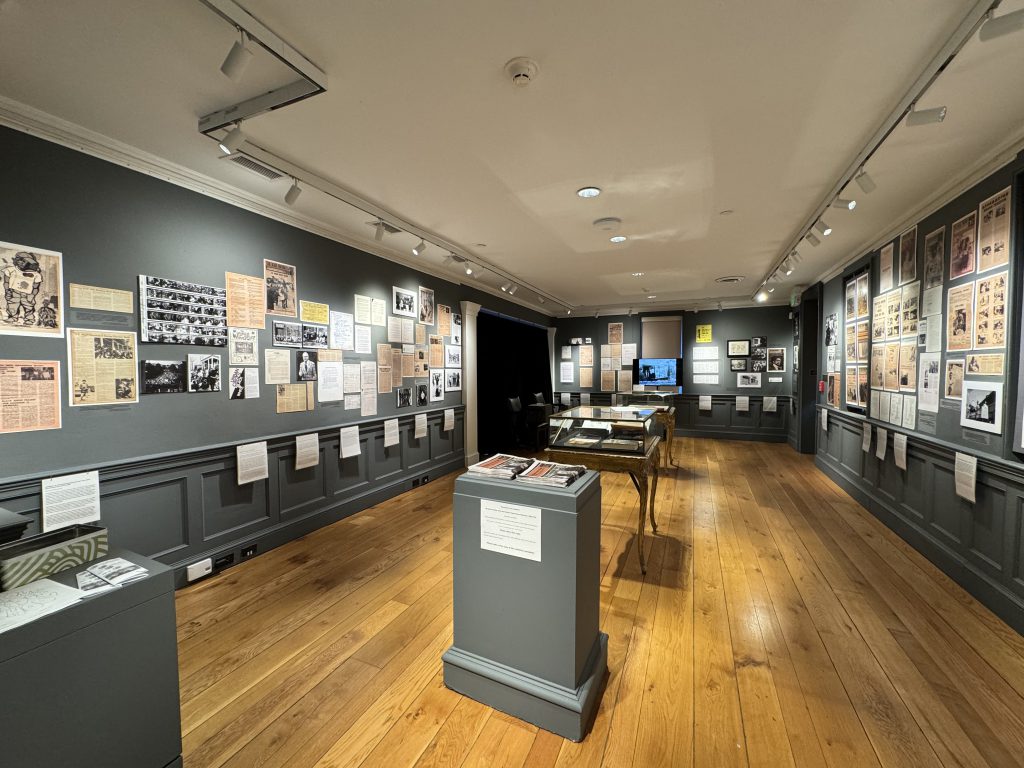
I was excited to visit the Peale last week to see a collaborative, student-curated exhibition on the history of the Baltimore chapter of the Black Panther Party. The Peale describes itself as “Baltimore’s Community Museum” with a mission of “building an archive of Baltimore stories.” Just off the JFX in the shadow of City Hall, its seriously historic building underwent major renovations between 2017 and 2022.
My reason for venturing downtown on my day off from the library was to see the exhibit, “Revolution in Our Lifetime”: The Black Panther Party and Political Organizing in Baltimore, 1968–1973, which was set to run through May 26 (and I’ve heard may be extended through July). Curated by a group of students from Morgan State University and Johns Hopkins University, with several Hopkins faculty acting as project advisors, “Revolution in Our Lifetime” puts archival source material on full display.

Reproductions of archival documents from many area repositories–including UBalt’s Special Collections and Archives, along with University of Maryland Baltimore County Special Collections, Goucher College Special Collections and Archives, the Maryland Center for History and Culture, and Johns Hopkins University Sheridan Libraries–line the walls of the gallery, stacked three and four images high, salon style. A dizzying array of sources and evidence reveal the extent of information publicly available for research on our hometown chapter of the Black Panther Party.
This bold display of archival photographic images, digitized footage, and textual documentation counters a commonly held belief among local historians that primary sources on Baltimore’s Black Panthers don’t exist. Visitors to the Peale are invited to peer closely at the source material for themselves. If you go (and I recommend it), be prepared to spend time reading the texts displayed in this exhibit.
As part of their project, students and faculty from “Revolution in Our Lifetime” spent many hours working with archivists from UBalt’s Special Collections and Archives. Archival collections highlighted in the exhibit include: the Chester L. Wickwire Papers, the Model Urban Neighborhood Demonstration Records, the American Civil Liberties Union of Maryland Records, and the Criminal Justice Commission Records. All of these collections are publicly accessible and open for research.

On the evening I visited the Peale, I was greeted warmly at the door and encouraged to explore all floors of the building, where I found a variety of history, culture, and arts displays. There was no visitor fee, but donations are encouraged, and I was happy to contribute something before leaving.
As a librarian and archivist dedicated to 20th century local history, seeing a project like this one come to fruition is gratifying. The collaborative nature of the scholarship, and that fact that its is on public display in a local community museum, make “Revolution in Our Lifetime” a real highlight in the final weeks of the academic year.
Thanks, Aiden, for your delightful description of the current exhibit and also for reminding us about this local treasure. I’ve passed by this museum a few times on walks through the city and now will definitely make it a point to visit. A few weeks ago I visited another local treasure in UBalt’s neighborhood – the Lillie Carroll Jackson Civil Rights Museum. I highly recommend a visit and was delighted to see the Chester L. Wickwire papers referenced a couple times. Keep up the wonderfully collaborative work of Special Collections & Archives!